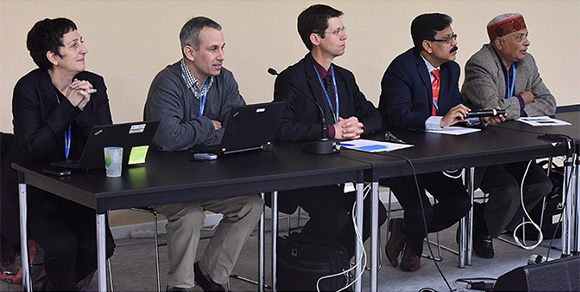Making an Integrated Approach to Air Pollution and Climate Change a Reality in Asia
Institute for Global Environmental Strategies (IGES)
Outline
Many climate change actions do not only reduce greenhouse gases (GHGs) but also curb air pollution. Meanwhile, mitigating some air pollutants known as short-lived climate pollutants (SLCPs) can also help limit near-term climate change. The growing awareness of air-climate linkages underlines that policymakers will need to take more integrated approaches to climate change and air pollution policies. The benefits of doing so promise to be particularly significant in Asia. This side event will highlight several recently launched initiatives that such as Asia Pacific Clean Air Partnership (APCAP) and Integrated Better Air Quality (IBAQ) program that aims to equip policymakers with the knowledge and skills to make integrated approaches to climate change and air pollution a reality in Asia.
Program
-
- Making an Integrated Approach to Air Pollution and Climate Change a Reality in Asia
- Eric Zusman, IGES, Moderator
Martina Otto, Climate and Clean Air Coalition (CCAC)
Mark Lawrence, Institute for Advanced Sustainability Studies (IASS)
Eklabya Sharma, International Centre for Integrated Mountain Development (ICIMOD)
Munjurul Khan, Ministry of Environment, Bangladesh
Summary
This side event focused on efforts to integrate air pollution and climate change mitigation activities in Asia. These efforts have gained a growing amount attention due to the increased awareness of short-lived climate pollutants (SLCPs). SLCPs are types of air pollutants—such as black carbon, methane and hydrofluorocarbons (HFCs)—that have a significant warming influence on the climate during their relatively short atmospheric lifetimes. Mitigating SLCPs can therefore deliver fast results for the climate and simultaneously help address Asia’s serious air pollution problems. It is nonetheless important to underline that mitigating SLCPs will help reduce near term as opposed to long term climate change. They should therefore be addressed together with CO2 to stay within 2°C.
The opportunity to mitigate SLCPs are particularly great in Asia; however, there are several challenges that need to be overcome to realize this opportunity. These include strengthening the links between science, policy and practice; building the capacity of national institutions to conduct relevant field research; and modeling and partnerships with relevant stakeholders. Countries such as Bangladesh have made progress in several of these areas. For instance, Bangladesh has developed public urban transport initiatives; enacted laws to reduce open burning; promoted more efficient cookstoves; engaged in public awareness-raising; and pushed for transboundary cooperation with neighboring countries.
Key Messages
- Reducing emissions of short-lived climate pollutants (SLCPs), including black carbon, methane and hydrofluorocarbons (HFCs), can help improve air quality and climate change.
- The Climate Change and Clean Air (CCAC) was established in 2012 to promote action on SLCPs. The CCAC currently works through 11 initiatives which focus on, inter alia, agriculture, bricks, cookstoves, oil and gas, waste and urban health.
- In Asia, there is a significant need to address black carbon, especially in snow and ice covered regions such as the Kathmandu valley.
- Strengthening the links between science, policy and practice would help the CCAC and national governments clean the air and protect the climate in these vulnerable areas.
Photograph
Reporters
Eric Zusman, Institute for Global Environmental Strategies





